If you’re looking for a low-maintenance, easy-to-care-for houseplant, the Snake plant is the perfect choice. With its bold, upright leaves and striking variegation, it’s a beautiful addition to any home. Our Ultimate Guide provides all the information about Snake plants and their benefits.
“I have a snake plant and I love it. I don’t have to worry about watering it or anything. I just let it sit in my room and it looks great.” – Kylie Jenner
Likewise, Snake plants are also known for their air-purifying properties, so they’re not only beautiful, but beneficial to your health as well.
The snake plant got its name from its long, narrow leaves, which can be variegated (meaning they have different colors on them). The leaves are often green with yellow or white stripes. The snake plant can grow to be quite tall, so if you have a small space, you may want to choose a smaller variety.
Similarly, the snake plant is also called the mother-in-law’s tongues. It’s tolerant of low light and infrequent watering, and it doesn’t mind if you forget to fertilize it. The snake plant is an evergreen, meaning it will keep its leaves year-round. It’s a slow grower, so you won’t have to worry about it taking over your space.
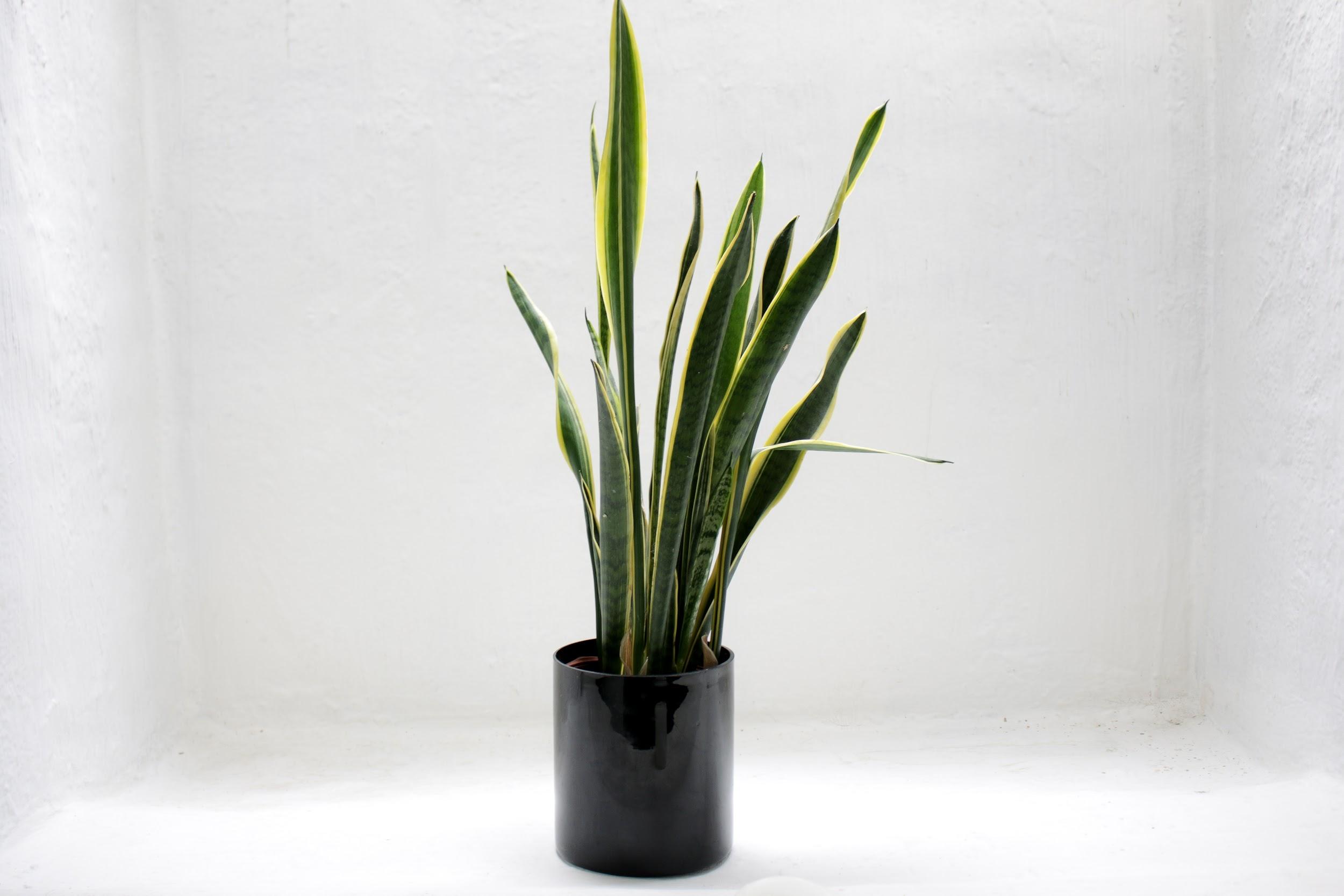
Credit: Pexels
If you’re looking for a plant that will purify the air in your home, the snake plant is a good choice. It’s been shown to remove toxins like formaldehyde and carbon monoxide from the air.
The History Of Snake Plants
The snake plant is a native of West Africa, where it grows in the wild. It was first brought to Europe in the late 18th century by explorers and traders, and then to America in the early 19th century. The plant became popular in Europe and America as a houseplant in the mid-19th century.
The snake plant is a succulent, which means it stores water in its leaves. This makes it a very tough plant that can survive in dry conditions. The plant gets its common name from the way its leaves grow – they are long and narrow, and often have a wavy or snake-like appearance. The scientific name for the snake plant is Sansevieria trifasciata.

Credit: Pexels
The snake plant is an easy plant to care for, and it is very tolerant of neglect. It can grow in a wide range of conditions, from low-light areas to full sun. The plant is also resistant to drought and can go for long periods without water.
The Benefits Of Snake Plants
Snake plants are one of the most popular houseplants around, and for good reason! They require low maintenance, tough as nails, and look great in any type of decor. But did you know that snake plants also come with a host of benefits? From improving air quality to reducing stress levels, read on to learn more about the amazing benefits of snake plants.
- Air Purifier
One of the most well-known benefits of snake plants is their ability to purify the air. Snake plants absorb harmful toxins and pollutants from the air and release oxygen, making them a great addition to any home or office. Not only do they improve air quality, but they also help to reduce stress levels and increase productivity.
- Reduce Stress Levels
In addition to improving air quality, snake plants also help to reduce stress levels. Studies have shown that being around plants can help to lower blood pressure, heart rate, and anxiety levels. If you’re looking for a way to reduce stress in your life, adding a snake plant to your home or office is a great place to start.
- Increase Productivity
Not only do snake plants help to reduce stress levels, but they also increase productivity. One study found that workers in offices with plants were 15% more productive than those in offices without plants. If you’re looking for a way to boost your productivity, adding a snake plant to your workspace is a great idea.
- Improve Sleep Quality
If you’re looking for a way to improve your sleep quality, snake plants are a great option. Snake plants release oxygen at night, which can help to improve sleep quality. Additionally, they help to reduce stress levels and anxiety, both of which can contribute to better sleep.

The Different Types Of Snake Plants
There are many different types of snake plants, and they come in a variety of colors and sizes. Some of the most popular types include the following:
1. Mother in law’s Tongue (Sansevieria Trifasciata):
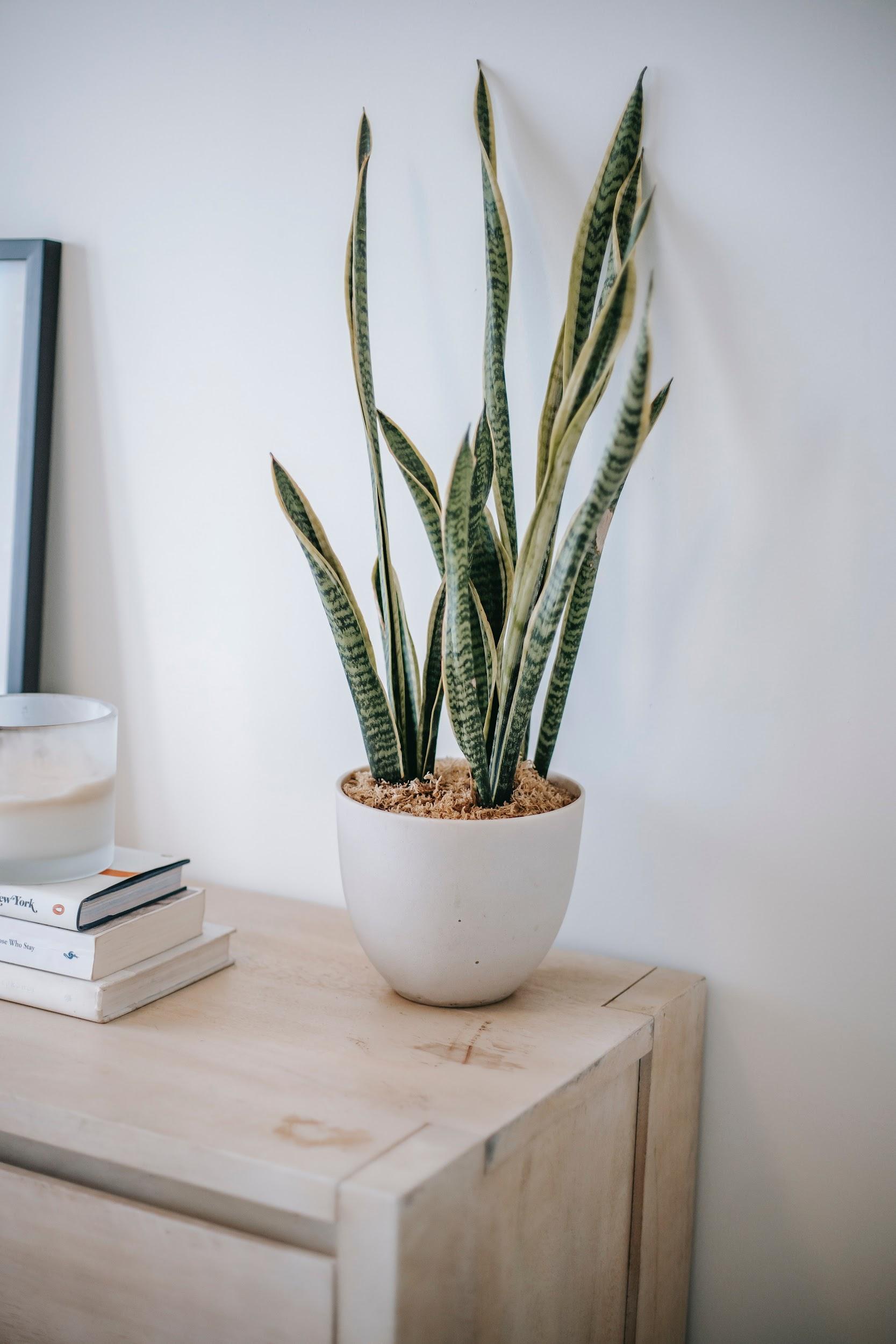
Credit: Pexels
Sansevieria Trifasciata is one of the most popular snake plants, and it is characterized by its long, green leaves. It is a very tough plant, and it can tolerate a wide range of conditions.
2. Cylindrical Snake Plant (Sansevieria Cylindrica):
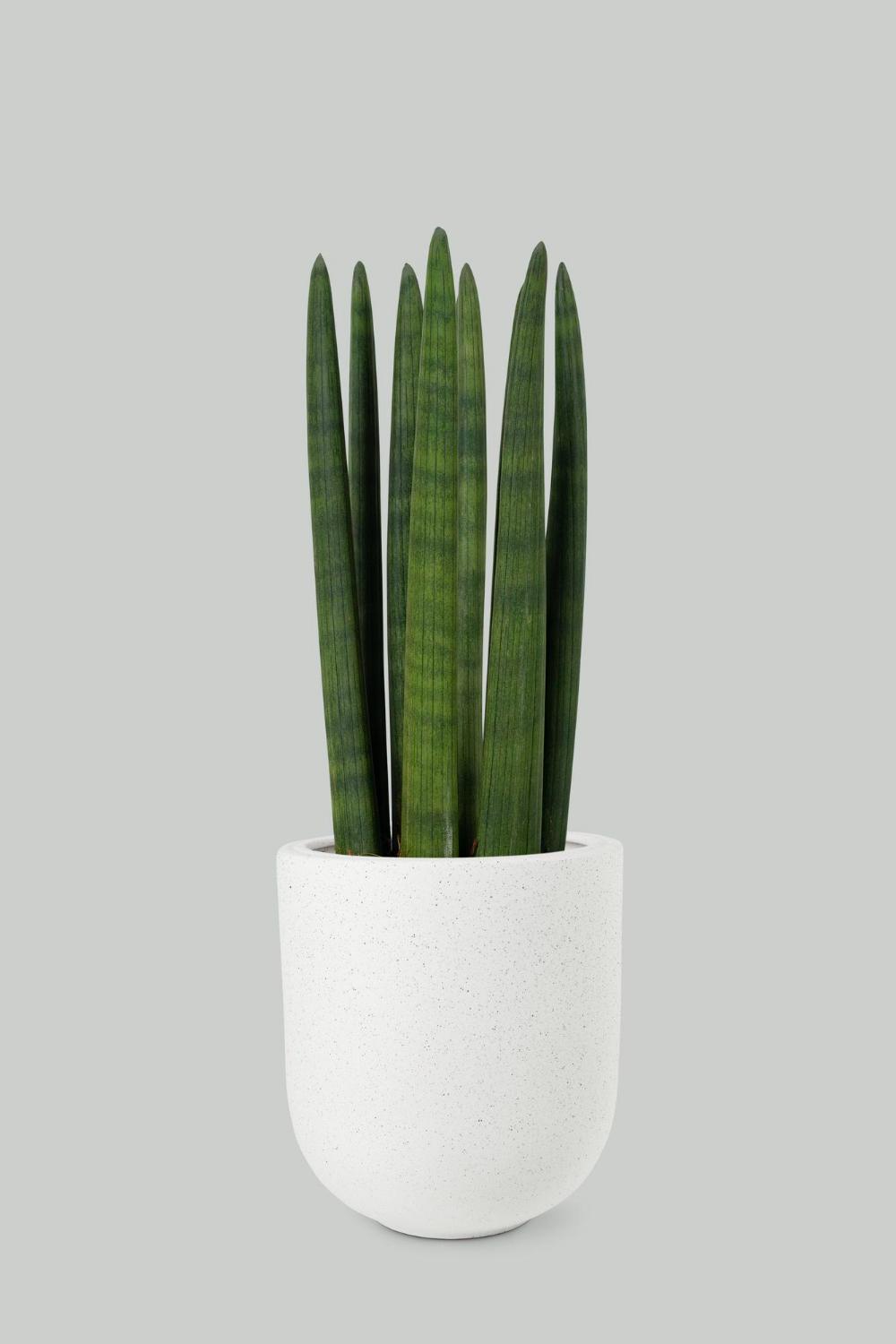
Credit: Freepik
This type of snake plant is characterized by its round, cylindrical leaves. It is a very drought-tolerant plant, and it does not need a lot of water to survive.
3. Ceylon bowstring hemp (Sansevieria Zeylanica):
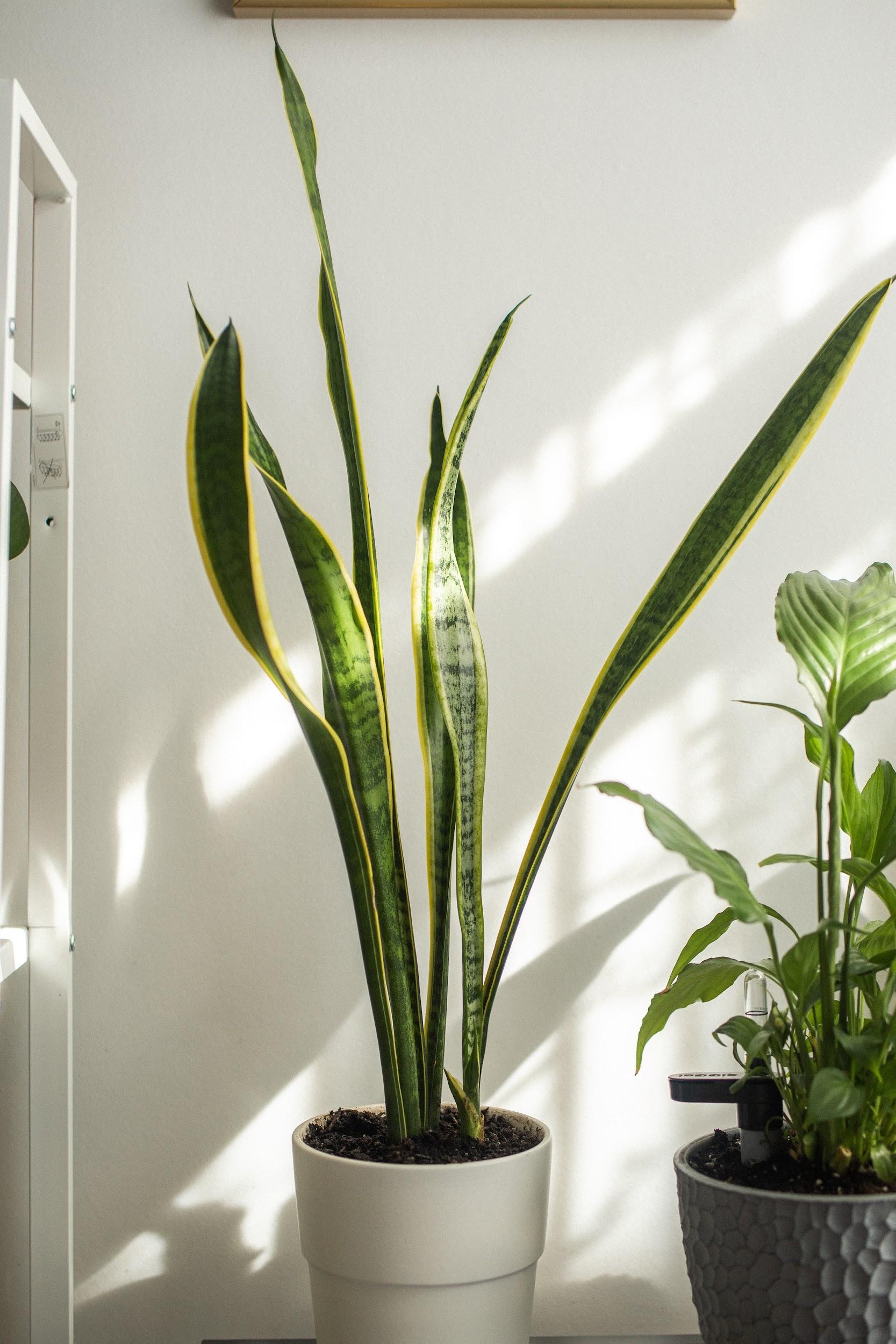
Credit: Pexels
It is characterized by its thin, blue-green leaves. Also, it’s a very tolerant plant that can survive in a wide range of conditions.
4. Tom Gracilis (Sansevieria Gracilis):
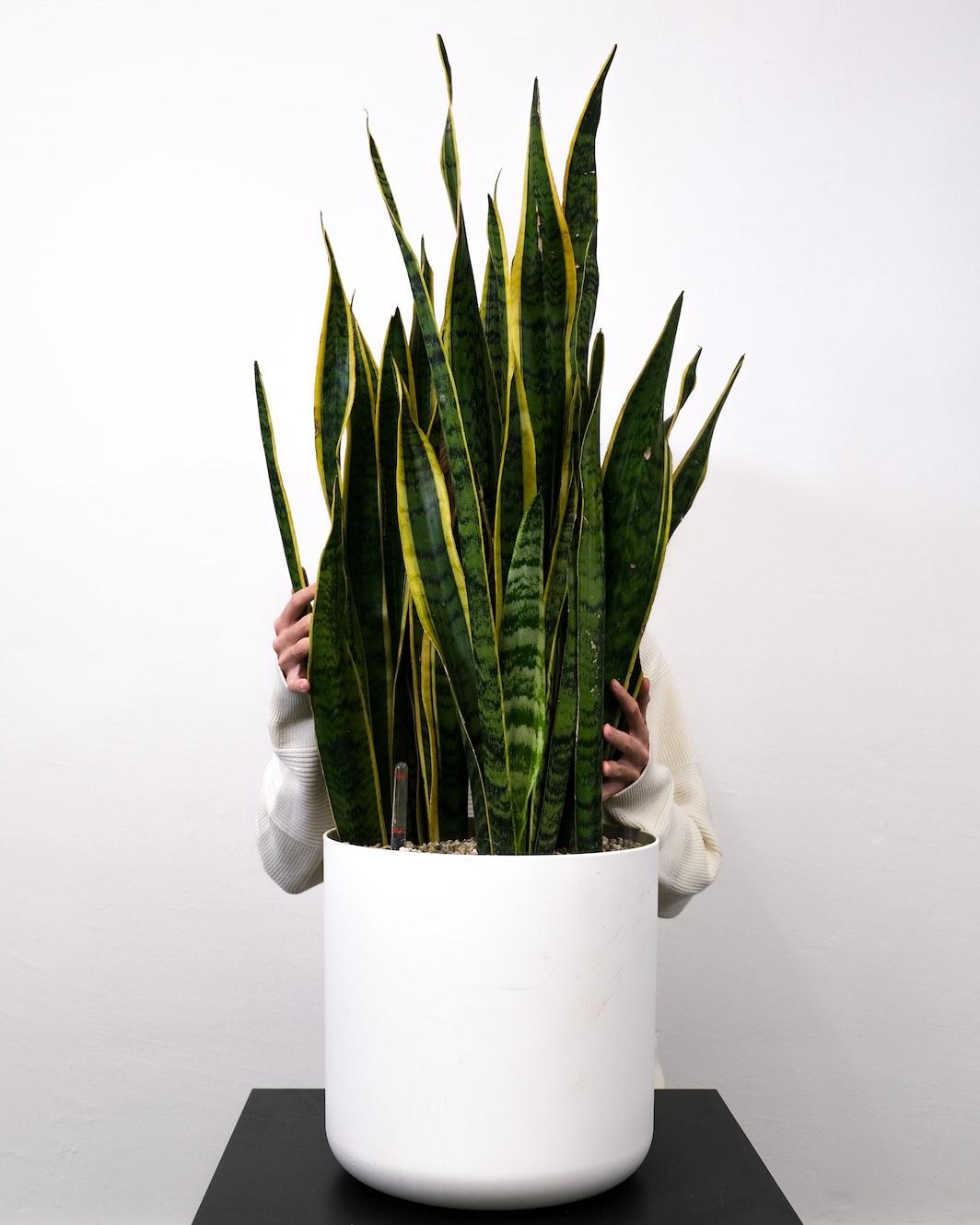
Credit: Unsplash
Sansevieria Gracilis is characterized by its long, thin leaves. It is a very tolerant plant, and it can survive in a wide range of conditions.
5. Blue Sansevieria (Sansevieria Ehrenbergii):
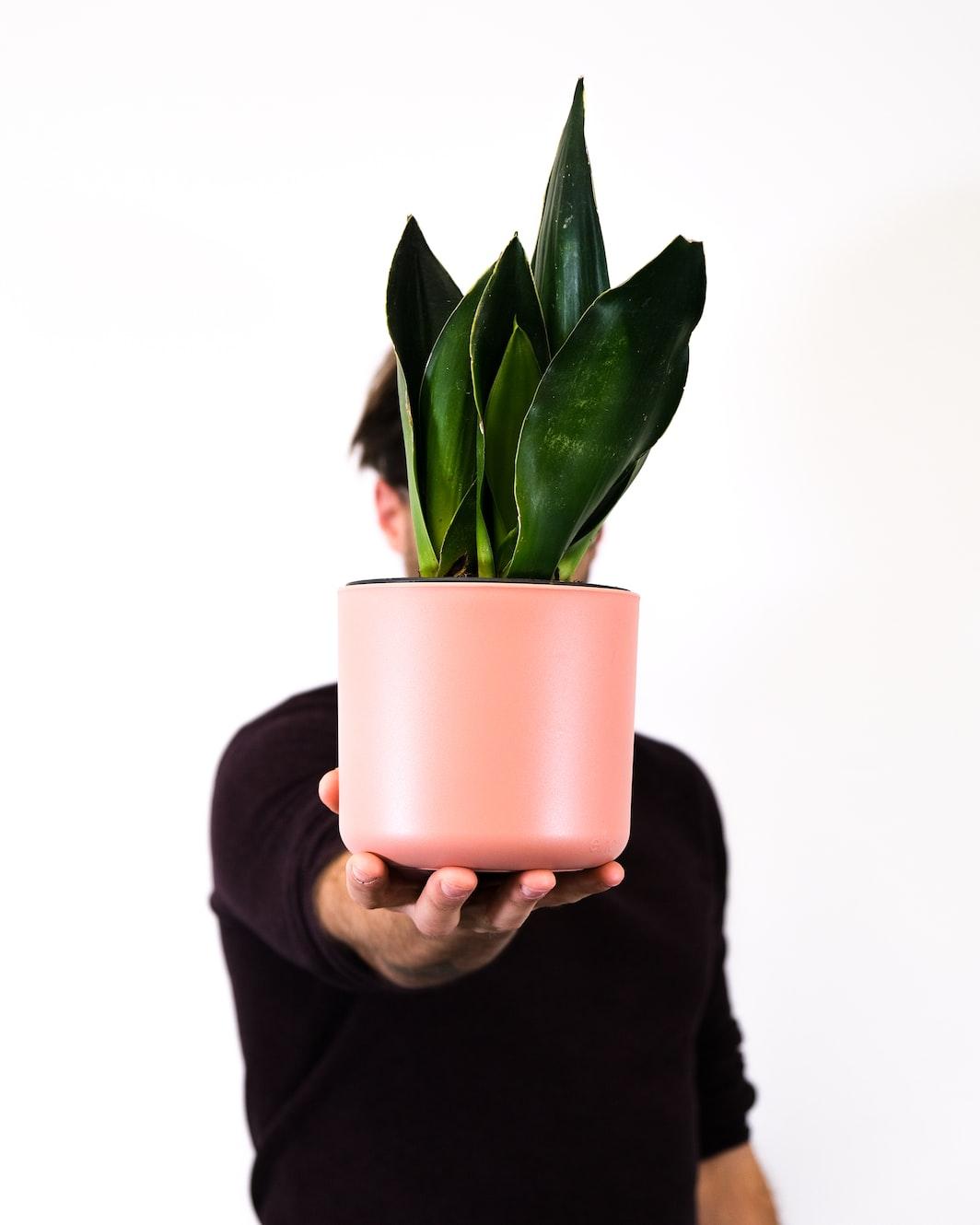
Credit: Unsplash
The plant is characterized by its short, thick leaves. It is also tolerant and tends to survive in a wide range of conditions.
The Best Conditions For Snake Plants
Snake plants are one of the most popular houseplants around, and it’s no wonder why. They’re easy to care for, tolerant of a wide range of conditions, and look great in just about any setting.
If you’re thinking about adding a snake plant to your home, there are a few things to keep in mind in order to ensure that it thrives. Here are the best conditions for snake plants:
- Light: Snake plants do best in bright, indirect light. They can tolerate low light conditions, but will grow slowly and may lose some of their variegation (the patterns on their leaves). If you have a snake plant that’s not getting enough light, you may notice that the leaves start to droop.
- Water: Snake plants are very drought tolerant and can go long periods without water. When watering, be sure to allow the soil to dry out completely between watering. Over-watering can cause the roots to rot, so it’s best to err on the side of too little rather than too much.
- Temperature: Snake plants are native to tropical regions and prefer warm temperatures. They can tolerate a wide range of temperatures, but will do best in an environment that is between 60 and 85 degrees Fahrenheit.
- Soil: Snake plants prefer well-draining, sandy soil. If your soil is heavy or clay-like, you can mix in some perlite or sand to help improve drainage.
- Fertilizer: Snake plants don’t need a lot of fertilizer, and can actually be damaged by too much. If you do fertilize your snake plant, be sure to use a light hand and only fertilize once a month at most. An all-purpose, diluted fertilizer will work fine.
With these conditions in mind, you’re well on your way to growing a healthy and thriving snake plant.
The Worst Conditions For Snake Plants
Snake plants are one of the most popular houseplants around, and for good reason! They’re easy to care for, tolerant of a wide range of conditions, and look great in just about any setting.
However, there are a few things that snake plants don’t like, and if you’re not careful, you can end up with an unhappy plant. Here are the worst conditions for snake plants:
- Too Much Water:
Snake plants are native to arid regions of Africa, so they’re used to living in dry conditions. If you water them too often, or keep the soil too moist, they’ll start to rot and may even die.
- Excess Sunlight:
While snake plants can tolerate bright light, they don’t like direct sunlight. If you live in a particularly sunny climate, it’s best to keep your snake plant in a shady spot.
- Concentrated Fertilizer:
Snake plants are slow growers, so they don’t need a lot of fertilizer. In fact, too much fertilizer can actually burn their roots and damage the plant.
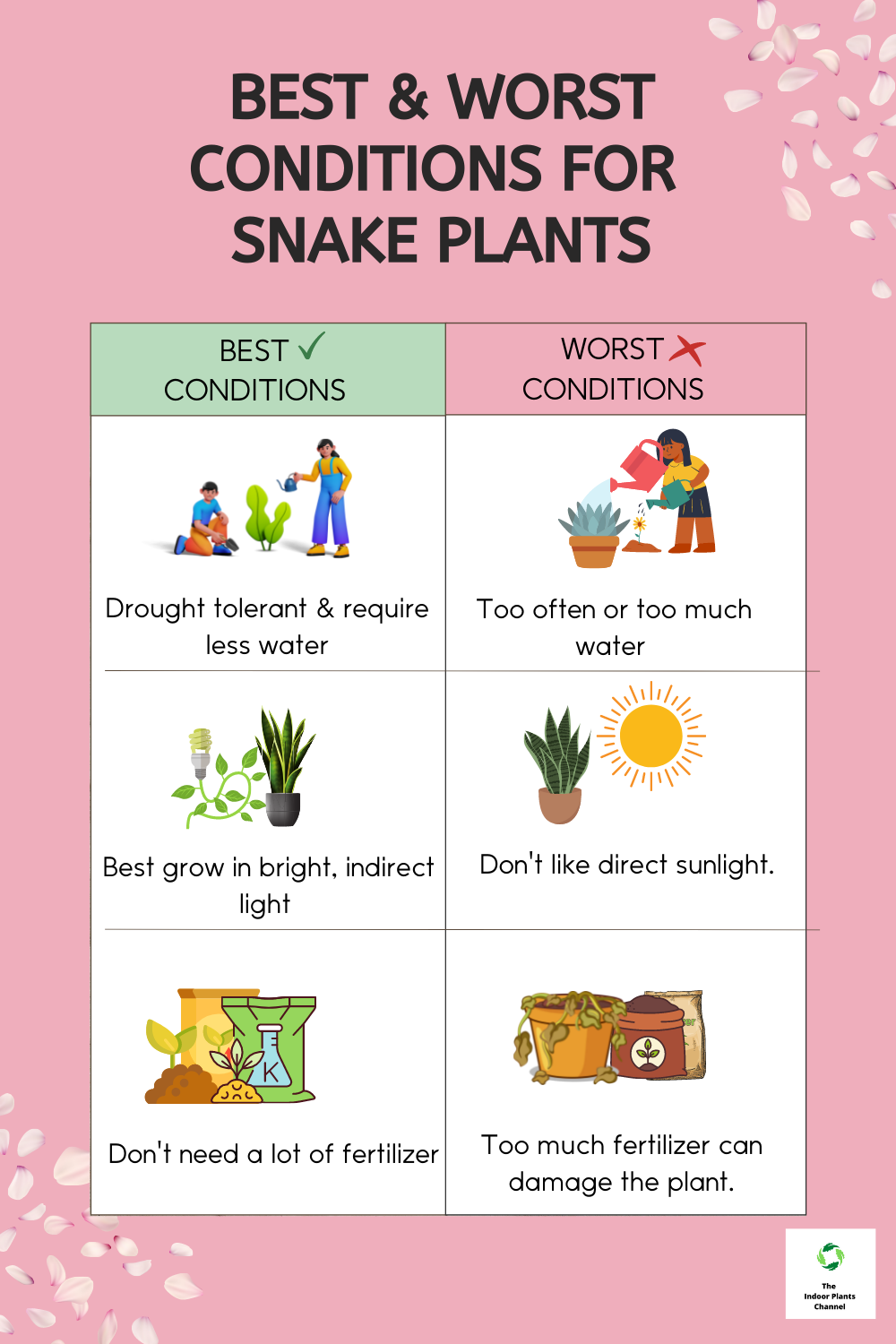
How To Plant A Snake Plant
If you want to add a touch of greenery to your home but don’t have a lot of time to care for plants, a snake plant may be the perfect solution. Snake plants are very easy to care for and can thrive in a variety of different conditions.
When choosing a pot for your snake plant, make sure it has drainage holes in the bottom.
Snake plants do not like to sit in wet soil, so drainage is important. You can use a standard potting mix or a cactus mix for your snake plant.
- Simply remove it from its current pot and place it in the new pot.
- Gently firm the soil around the roots and water lightly. Snake plants do not need a lot of water, so be sure not to overdo it.
- Place your snake plant in a bright spot, but out of direct sunlight. Snake plants can tolerate a wide range of light conditions, but too much direct sunlight can cause the leaves to scorch.
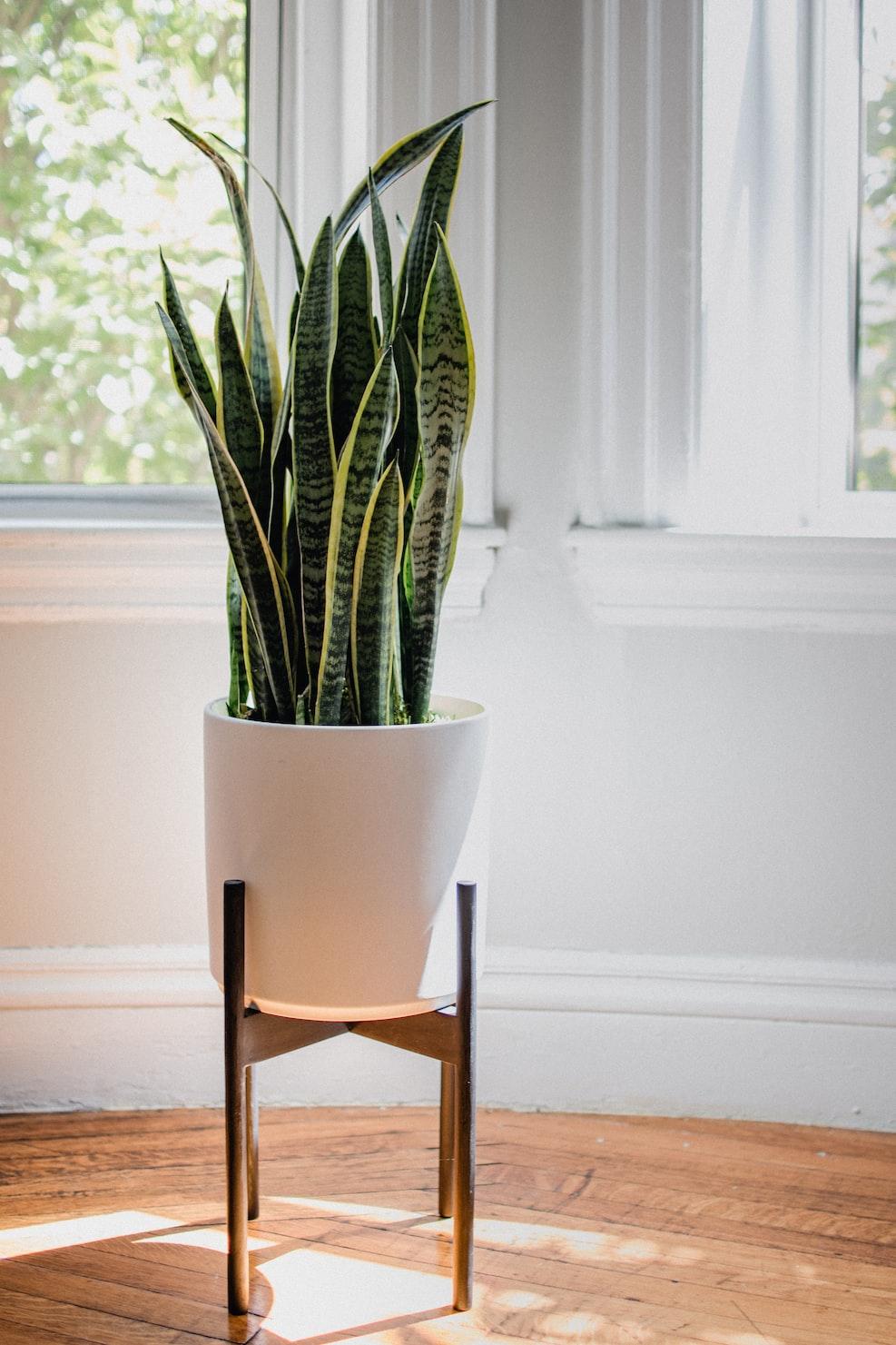
Credit: Unsplash
How To Care For A Snake Plant
Snake plants are one of the easiest houseplants to care for. They are very tolerant of neglect and can even thrive in low-light conditions. However, there are a few things you can do to help your snake plant stay healthy and looking its best.
Here are a few tips on how to care for a snake plant:
- Snake plants prefer well-drained soil. Be sure to use a pot with drainage holes to help prevent root rot.
- Snake plants do not like to be overwatered. Allow the soil to dry out completely between watering.
- If your snake plant starts to look yellow or wilted, it is probably getting too much light. Move it to a spot with more shade.
- Snake plants are not heavy feeders. Fertilize them once a month at half the strength recommended on the package.
- Snake plants can be propagated easily from leaf cuttings. Simply cut a leaf into sections and pot them up in a moist potting mix.
How To Propagate A Snake Plant
If you want to propagate your snake plant, there are a few things you need to do.
- Take a cutting from the plant.
You can do this by cutting a leaf off at the base, or by cutting off a section of the stem.
- Prepare the cutting.
You can do this by putting it in water or by putting it in a pot with moist soil. If you’re putting it in water, make sure to change the water every few days.
- Wait for it to root.
This can take a few weeks, or it might take a few months. Once it has rooted, you can then transplant it into a pot with soil.
Congratulations, you have now successfully propagated a snake plant!
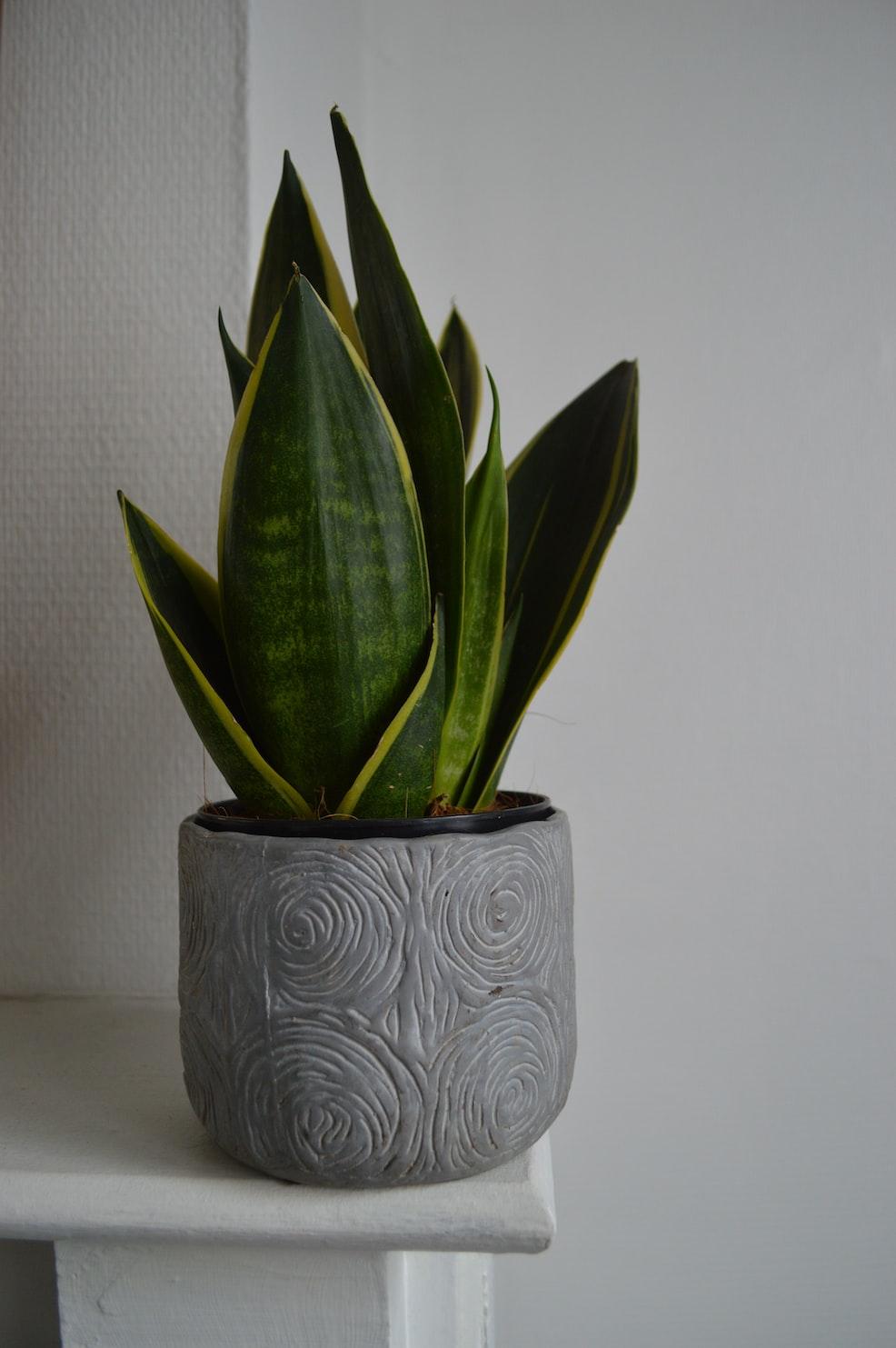
Credit: Unsplash
How To Identify A Snake Plant
Assuming you would want to know how to identify a snake plant so that you can take better care of it or simply want to know more about the plant, here are a few tips.
First and foremost, a snake plant is also known as a Sansevieria or mother-in-law’s tongue. It is succulent, which means that it has thick, fleshy leaves that store water. The leaves are long and can be either straight or curved, and they are usually green with white or yellow stripes. The plant can grow to be quite tall, up to four feet, and it produces small, white flowers.
If you want to identify a snake plant, you should first look at its leaves. As mentioned, they are long and can be either straight or curved, and they are usually green with white or yellow stripes. If the plant you are looking at has leaves that fit this description, then it is likely a snake plant.
Another way to identify a snake plant is by its flowers. As mentioned, the plant produces small, white flowers. If you see a plant with these flowers, then it is likely a snake plant.
To sum up, you can identify a snake plant by its leaves (long and green with white or yellow stripes) or by its flowers (small and white).
Frequently Asked Questions About Snake Plants
- What is a snake plant?
A snake plant is a type of succulent plant that is native to Africa. It gets its name from the fact that its leaves are often variegated or have a snake-like pattern.
- How do you care for a snake plant?
Snake plants are relatively easy to care for. They prefer bright, indirect light but can also tolerate low light. Allow the soil to dry out completely between watering.
- What are the benefits of having a snake plant?
Snake plants are known to be very efficient at purifying the air. They also help to improve indoor humidity and can help to reduce stress and fatigue.
- Are there any drawbacks to having a snake plant?
The only real drawback to having a snake plant is that they can be poisonous if ingested. Keep them out of reach of children and pets.
Bonus Tips
- Place the snake plant in a bright location, but out of direct sunlight.
- Water the snake plant when the soil is dry to the touch. Allow the plant to dry out completely between watering.
- Fertilize the snake plant once every month during the growing season.
- To encourage growth, pinch back the tips of the leaves.
- Be sure to provide good drainage for the snake plant.
- Repot the snake plant every two to three years.
- Always allow the soil to dry out completely between watering.
Conclusion
Snake Plants are common indoor plants with amazing benefits. They are of different types, so you have the option of choosing a choice. The guide above contains all you should know about Snake plants, its types and how you should take care of them. It’ll also show you the benefits of having this effective plant at home.
Michelle Wilde
Related posts
23 Comments
Leave a Reply Cancel reply
![]()
About Michelle Wilde
Michelle Wilde is a stay-at-home mom and avid plant lover. Armed with a post-graduate degree in Computer Science (no kidding!), she loves researching plants and landscapes. When she is not caring for her 4 kids, she spends time on her passion for plants. She blogs at www.indoorplantschannel.com, the trusted source for indoor plants.
Learn more
Subscribe
* You will receive the latest posts and updates about indoor plants!
Search
Recent Posts
Categories
- Beginner Guides (10)
- FAQ (206)
- General (2)
- How-To Guides (212)
- Indoor Plants (214)
- Pest Management (2)
- Plant Problem Solutions (4)
- Seasonal Growing (2)
- Specialized Environments (2)
- Specific Plant Care (3)
- Technical Growing (2)
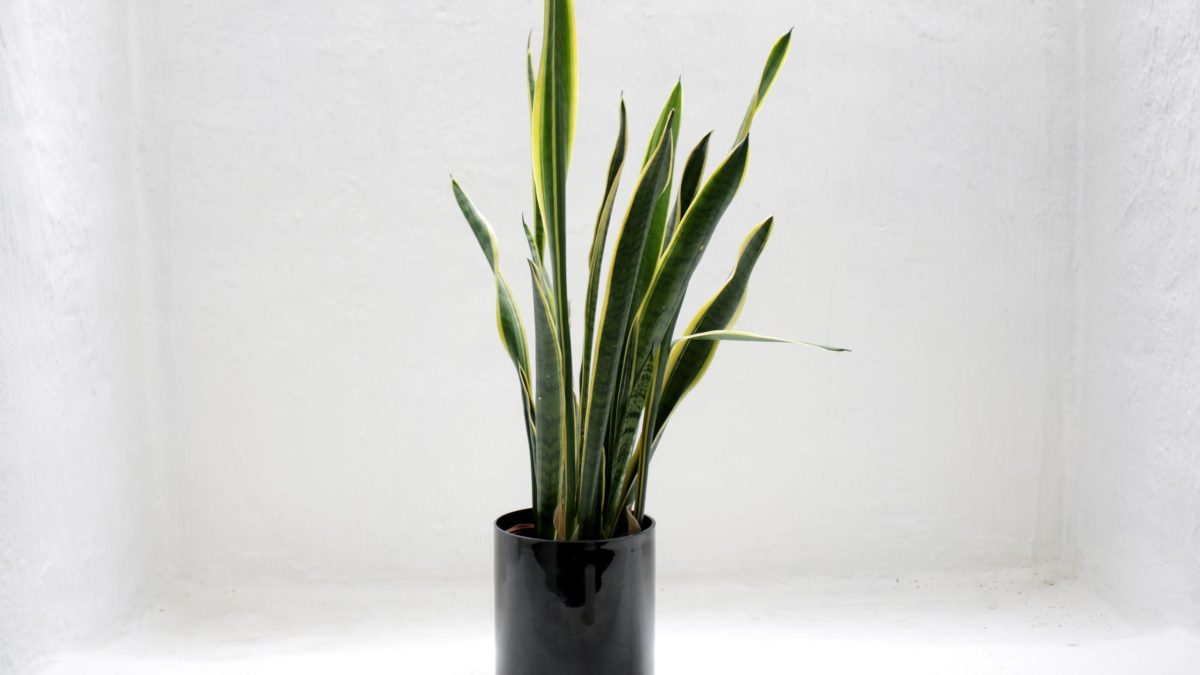
[…] you’re looking for a low-maintenance, easy-to-care-for houseplant, look no further than the viper’s bowstring hemp plant! In this blog post, we’ll show you how to care for your viper’s bowstring hemp plant indoors, so […]
[…] you know that the snake plant is one of the most popular houseplants in the […]
[…] Snake plants are perfect for those who want an easy-to-care-for plant. They are very tolerant of neglect and can even thrive in low-light conditions. […]
[…] snake plant is a great beginner plant because it is very easy to care for. Snake plants do not need much water […]
[…] snake plant is a succulent plant that is native to Africa. It has long, thin leaves that are covered in a sticky, […]
[…] snake plant is a good choice for beginners because it is very easy to care for and it is very tolerant of a […]
[…] Snake plants are one of the most popular houseplants around and for good reason. They’re nearly impossible to kill, thrive in low light, and don’t need much water. Snake plants are also known for their air-purifying qualities, so they are a great choice if you’re looking for a plant that will improve the quality of your indoor air. […]
[…] snake plant is a great option for those who want a low-maintenance plant that is also very resilient. It is […]
[…] Trifasciata, or the snake plant, is a good choice for a wax leaf houseplant if you are looking for something that is low […]
[…] Snake plant […]
[…] 4. Snake plant […]
[…] Snake plants are a type of succulent that is native to Africa. They are known for their striking appearance and their ability to purify the air. Snake plants can help to reduce stress and promote a sense of peace and relaxation. […]
[…] Snake plants are easy to care for and make a great addition to any home or office. They are known for their ability to purify the air and improve indoor air quality. […]
[…] Snake plants are known for their ability to purify the air and to create a feeling of calm. They can help to improve your mood by reducing stress and anxiety. […]
[…] Snake plants are known for their ability to improve air quality. They emit oxygen at night, which can help you to sleep better, and they also help to filter out toxins and pollutants. […]
[…] snake plant, also called a mother-in-law’s tongue, is a type of succulent plant that is native to Africa. […]
[…] Snake plants […]
[…] snake plant, also known as the mother-in-law’s tongue, is a tough plant that can tolerate low light and […]
[…] Snake plants are easy to care for and can tolerate a wide range of growing conditions. The plants are very drought tolerant and can even withstand being neglected. Snake plants grow best in bright, indirect sunlight but can also tolerate low-light conditions. […]
[…] be sharing the best indoor plants that require little water and maintenance. From succulents to snake plants, you’re sure to find a plant that’s perfect for your home. So what are you waiting for? Keep […]
[…] of the most popular options. They are easy to care for and can thrive in a variety of conditions. Snake plants and Boston ferns are also good […]
[…] without making the space feel closed off. They decided to use a variety of tall plants, such as snake plants and fiddle leaf figs, to create a living wall. The plants not only divide the space, but they also […]
[…] known as “Mother-in-Law’s Tongue,” the snake plant is a popular choice for increasing oxygen in the home. Its tall, upright leaves are able to absorb […]